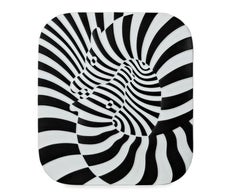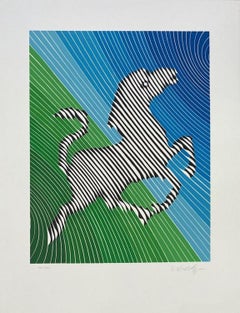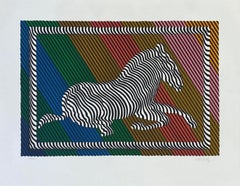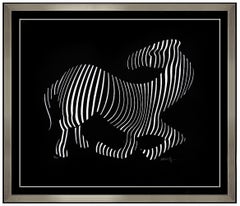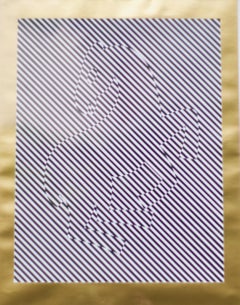Victor Vasarely Zebra
1970s Op Art Abstract Prints
Porcelain
1980s Op Art Abstract Prints
Lithograph
1980s Abstract Abstract Prints
Lithograph
1980s Abstract Abstract Prints
Lithograph
Recent Sales
Late 20th Century Op Art Animal Prints
Other Medium
1960s Op Art Abstract Prints
Screen
20th Century Contemporary Sculptures
Ceramic
1970s Abstract Abstract Prints
Screen
1970s Op Art Animal Prints
Screen
1970s Abstract Sculptures
Plexiglass
1980s Op Art Animal Prints
Screen
1980s Op Art Animal Prints
Screen
1980s Op Art Animal Prints
Screen
1970s Op Art Animal Prints
Screen
1970s Op Art Animal Prints
Screen
Early 20th Century Op Art Animal Prints
Black and White, Screen
1970s Op Art Abstract Prints
Screen
1970s Op Art Abstract Prints
Screen
1970s Op Art Abstract Prints
Screen
1970s Op Art Abstract Prints
Screen
1970s Op Art Abstract Prints
Screen
People Also Browsed
1960s Op Art Abstract Prints
Screen
1980s Op Art Abstract Prints
Glass
Late 20th Century Op Art Abstract Prints
Paper, Screen
1990s Op Art Interior Prints
Screen
1970s Kinetic Abstract Prints
Lithograph
1960s Op Art Abstract Sculptures
Metal
1970s Op Art Abstract Sculptures
Lucite, Plexiglass, Screen
1960s Op Art Abstract Sculptures
Plexiglass, Screen
Early 2000s Kinetic Abstract Sculptures
Plastic, Cardboard, Digital
Victor Vasarely Zebra For Sale on 1stDibs
How Much is a Victor Vasarely Zebra?
Victor Vasarely for sale on 1stDibs
Widely considered the grandfather of Op art, the French-Hungarian painter Victor Vasarely (1906–97) created eye-popping geometric abstractions that play with the viewer’s perception of depth, perspective and motion. A classic example is the 1937 Zebra, which consists of undulating black and white stripes that suggest the form of the titular animal through optical trickery. The work is often credited as the earliest Op art painting.
Such illusions were more than pleasing tricks for Vasarely, who insisted that “pure form and pure color can signify the world.” He wanted to “democratize” art by producing works in large editions at reasonable prices that were understandable across national and cultural boundaries. In the 1960s, he developed an alphabet plastique, or fine art alphabet, consisting of elementary visual building blocks that could be used in endless combinations to create original compositions. By employing this universal visual vocabulary and stripping away topical references, he sought to create what he called a “Planetary Folklore.”
Embodying Vasarely’s singular belief that art should serve a social function, accessible to all, these innovations may perhaps be his greatest contribution to 20th-century art.
Find a collection of Victor Vasarely prints, paintings, sculptures and other art on 1stDibs.
Finding the Right Prints And Multiples for You
Decorating with fine art prints — whether they’re figurative prints, abstract prints or another variety — has always been a practical way of bringing a space to life as well as bringing works by an artist you love into your home.
Pursued in the 1960s and ’70s, largely by Pop artists drawn to its associations with mass production, advertising, packaging and seriality, as well as those challenging the primacy of the Abstract Expressionist brushstroke, printmaking was embraced in the 1980s by painters and conceptual artists ranging from David Salle and Elizabeth Murray to Adrian Piper and Sherrie Levine.
Printmaking is the transfer of an image from one surface to another. An artist takes a material like stone, metal, wood or wax, carves, incises, draws or otherwise marks it with an image, inks or paints it and then transfers the image to a piece of paper or other material.
Fine art prints are frequently confused with their more commercial counterparts. After all, our closest connection to the printed image is through mass-produced newspapers, magazines and books, and many people don’t realize that even though prints are editions, they start with an original image created by an artist with the intent of reproducing it in a small batch. Fine art prints are created in strictly limited editions — 20 or 30 or maybe 50 — and are always based on an image created specifically to be made into an edition.
Many people think of revered Dutch artist Rembrandt as a painter but may not know that he was a printmaker as well. His prints have been preserved in time along with the work of other celebrated printmakers such as Pablo Picasso, Salvador Dalí and Andy Warhol. These fine art prints are still highly sought after by collectors.
“It’s another tool in the artist’s toolbox, just like painting or sculpture or anything else that an artist uses in the service of mark making or expressing him- or herself,” says International Fine Print Dealers Association (IFPDA) vice president Betsy Senior, of New York’s Betsy Senior Fine Art, Inc.
Because artist’s editions tend to be more affordable and available than his or her unique works, they’re more accessible and can be a great opportunity to bring a variety of colors, textures and shapes into a space.
For tight corners, select small fine art prints as opposed to the oversized bold piece you’ll hang as a focal point in the dining area. But be careful not to choose something that is too big for your space. And feel free to lean into it if need be — not every work needs picture-hanging hooks. Leaning a larger fine art print against the wall behind a bookcase can add a stylish installation-type dynamic to your living room. (Read more about how to arrange wall art here.)
Find fine art prints for sale on 1stDibs today.
- 1stDibs ExpertApril 5, 2022Victor Vasarely's famous painting Zebra is on display at the Pompidou Centre in Paris, France. He painted the piece in 1937. You can see elements of the Op art style that Vasarely would later become famous for taking shape in the painting. On 1stDibs, find a range of Victor Vasarely art.
